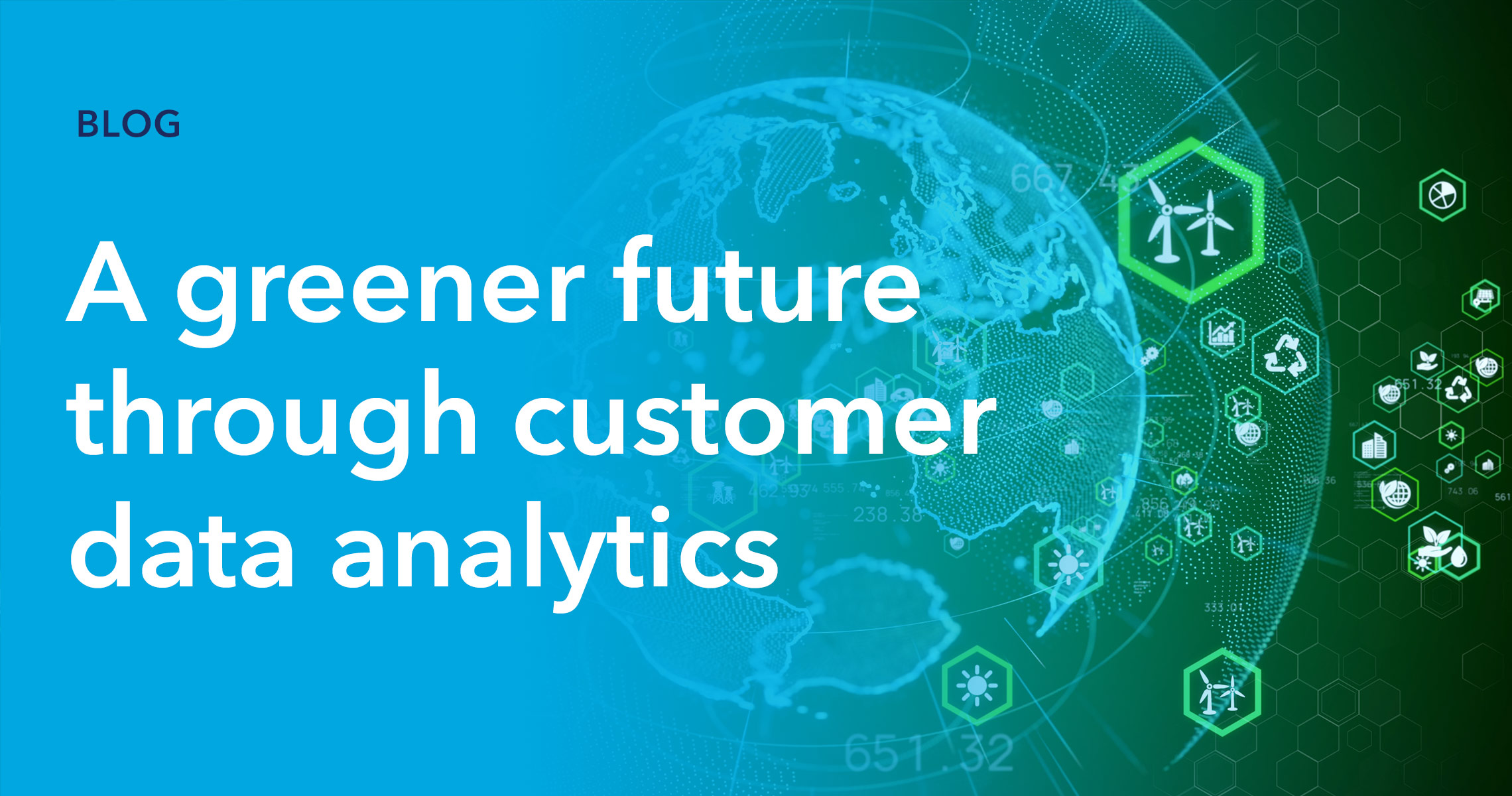Reaching net-zero greenhouse emissions and creating a greener future requires significant input from new technologies. All sectors of society will have to contribute to reach that goal, and data analytics will be a dominant driving force in measuring current energy usage and providing a pathway to a low-emission future. Here we’ll focus specifically on customer data analytics and its role in utilities, planners, and customers making smarter and more efficient energy decisions.
Achieve a greener future through customer data analytics
Customer data analytics involves collating, processing, and querying customer data to determine trends in user types and energy usage patterns. The results provide clear metrics on how energy can be used more efficiently and what the smart infrastructure of the future will look like. Here’s how:
Grid planning
Measuring current customer needs and estimating future demand is at the heart of smart infrastructure planning, with the goal of providing more efficient energy delivery and better service. This is apparent in one of the biggest transport network changes of the past 50 years, the move to electric vehicles (EV). The move to EV requires the creation of an entire grid of charging points at convenient locations and in a fraction of the time that the previous gas station network was put in place. Customer data analytics is proving key in identifying where drivers are most likely to want to charge and correlating that data with existing utility data on energy delivery infrastructure.
Alleviating customer EV concerns
Customer data analytics is not just about creating the best possible energy delivery infrastructure; it also reveals customer concerns and needs regarding EV adoption. One of the biggest (second most important for US consumers and the primary concern for Chinese consumers) is how charging infrastructure will affect travel. A robust and widespread charging network needs to be established to overcome these worries and allow for greater EV uptake. Additionally, consumer trust must also be won over. Fortunately, customer data analytics can help guide utilities, planners, and EV makers on how best to prove that users can trust the network.
Customer usage decisions
Energy production, particularly from renewables like solar, can create significant disparities in the efficiency and cost of energy for the consumer. Through improved service provision and customer data analytics, users can be given the power to make greener and cheaper choices about when and how they use energy, especially for major usage such as EV charging. Providing customers with updated energy dashboards that show them their usage, the cost per kWh at different times, and how they compare to other users gives them the ability to assess their consumption and make more sustainable decisions.
Creating smart grids
An important driver of renewable adoption on a personal level (such as installing roof-top solar) is the concept of a two-way energy supply. This means that when a consumer produces more energy than they need, they can sell it to the grid and recoup their installation outlay. However, these distributed energy resources (DERs) create a complicated grid that must be effectively managed to ensure that load management is performed correctly. Further complications are introduced by data protection regulations, which preclude any personally identifiable information being made available to others.
Advantages of innovation
Customer data analytics gives utilities a competitive advantage by allowing them to better understand what consumers want and how their technology can actually put them ahead of their competition in both the short and long-term. Creating and deploying innovative practices and technology, driven by customer data analytics, is what will move sustainable energy theory from the drawing board to the field. Economic, social and governance (ESG) metrics, for example, are becoming a common metric used by financial funds to qualify investment, meaning energy innovation delivers value on multiple levels.
Smart cities
A “smart city” is one that is highly electrified and automated. Smart cities use smart IoT sensors to monitor the city’s usage and needs so it can constantly improve the lives of citizens. Customer data analytics is naturally a part of this, and one of the biggest impacts it has is on public transport networks. Duquesne Light, for example, a private energy utility in Pennsylvania, has a specialist transport electrification team that works closely with municipal authorities to create electric bus networks that provide quality and efficient transport in areas that need it.
The future of green energy
The world needs and wants to move to a lower emission energy paradigm. This can only happen when all stakeholders work together. Customer data analytics allow utilities, planners, manufacturers, and customers to better understand energy usage and how to create energy infrastructure that will meet needs in terms of reliability and expectations in terms of energy efficiency.
However, the interface of these stakeholders can be complicated by data regulations and concerns over data sharing between potentially thousands of organizations. A data platform, such as Intertrust Platform, creates a secure environment for all data operations where admins have complete access control down to row and column level to decide user permissions. Since data querying is performed in containerized secure execution environments, the chance of data leakage is also minimized. This allows for easier collaboration between multiple entities and removes a major point of friction.
To find out more about how Intertrust Platform has enabled secure data sharing in the energy space, you can read more here or talk to our team.
About Abhishek Prabhakar
Abhishek Prabhakar is a Senior Manager ( Marketing Strategy and Product Planning ) at Intertrust Technologies Corporation, and is primarily involved in the global product marketing and planning function for The Intertrust Platform. He has extensive experience in the field of new age enterprise transformation technologies and is actively involved in market research and strategic partnerships in the field.

